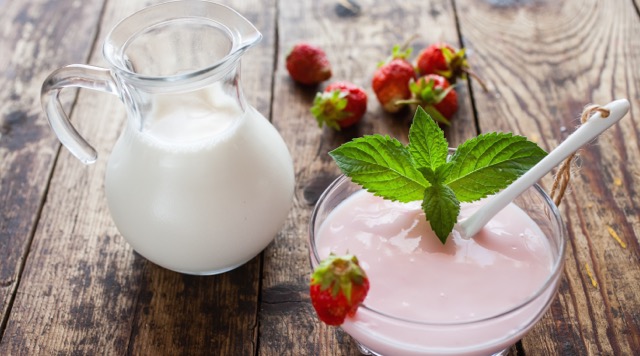In celebration of World Hypertension Day, we highlight the role that dairy products play in preventing and managing hypertension and share how you can get enough.
Hypertension (high blood pressure) is a risk factor for stroke and heart disease, two of the leading causes of death in Canada. Did you know that you can lower your risk of developing hypertension by making simple lifestyle changes?
These changes could include:
- Eating more vegetables and fruit
- Getting enough dairy products
- Lowering your sodium intake
- Limiting your alcohol intake
- Increasing your level of physical activity
Dairy products and hypertension: What is the link?
The DASH (Dietary Approaches to Stop Hypertension) diet plan is an effective way to prevent and manage hypertension. This diet encourages the consumption of vegetables and fruit (eight to ten servings per day), nuts and seeds, fish and dairy products (three servings per day). The DASH diet in many respects is similar to the dietary recommendations outlined in the new Canada’s Food Guide and is recommended by various health authorities for the prevention and management of hypertension, including Hypertension Canada and the Heart and Stroke Foundation.
Dairy products were shown to be a key component of the DASH diet: Diets that combined vegetables and fruit with dairy products reduced blood pressure twice as much as diets providing only more vegetables and fruit.1
A review of studies that looked at consumption levels of dairy products found that the risk of developing hypertension was 13% lower when higher amounts of total dairy (low and full fat) were consumed.2,3 A similar protective association was observed when looking specifically at milk and yogurt consumption, regardless of their fat content. While the most significant protective effect was observed with low fat dairy products and milk, higher fat dairy products and cheese did not increase risk of hypertension.2,3
In addition to preventing hypertension, dairy products were found to lower the risk of stroke and heart disease.4
While scientists don’t fully understand how dairy products help prevent and/or manage hypertension, they believe that the protective effects may be due to the package of nutrients dairy products provide. Key nutrients involved are:
- Calcium
- Vitamin D
- Magnesium
- Potassium
- Protein
What can I do to reduce my risk of developing hypertension?
Eat a balanced diet is a key component to following the DASH diet. When considering your options for protein foods, choose two to three servings of milk, yogurt and cheese throughout your day. Options include:
- One serving of milk is 1 cup (250 mL)
- One serving of yogurt is ¾ cup (175 g)
- One serving of cheese is 1.5 oz (50g)
Tips to get enough dairy products every day:
- Drink milk with meals and select water throughout the rest of the day
- Drink a latte instead of plain coffee or tea
- Make a yogurt and cucumber salad as a side dish or refreshing snack
- Have a smoothie made with yogurt, milk and fruit or vegetables
- Make your own yogurt salad dressing
- Have yogurt with fruit for breakfast, a snack or dessert
References
- Karanja NM, Obarzanek E, Lin PH, McCullough ML, Phillips KM, Swain JF, et al. J Am Diet Assoc. 1999 Aug;99(8 Suppl):S19-27.
- Soedamah-Muthu SS, Verberne LD, Ding EL, Engberink MF, Geleijnse JM. Hypertension. 2012 Nov;60(5):1131-7.
- Ralston RA, Lee JH, Truby H, Palermo CE, Walker KZ. A systematic review and meta-analysis of elevated blood pressure and consumption of dairy foods. J Hum Hypertens. 2012; 26(1):3-13.
- Mozzafarian D. Dietary and Policy Priorities for Cardiovascular Disease, Diabetes, and Obesity: A Comprehensive Review. Circulation. 2016; 133:187-225.
Updated by Joel Barohn, MS, RD, Chef
Originally written by Rola Zahr, MPH, RD




